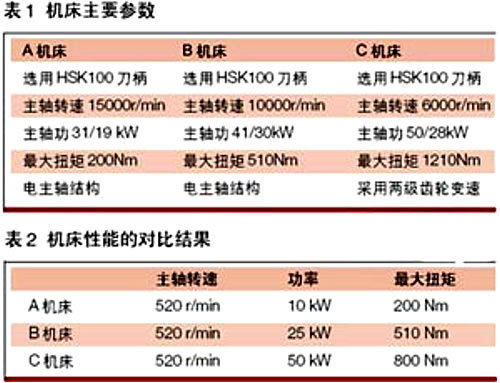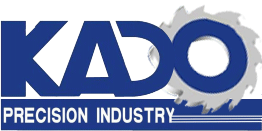
Tools: High-speed machining does not equal efficient production
Published on:
2021-09-15
High-speed machining is relative to traditional machining systems, and it contains two meanings: high spindle speed and high feed rate, that is, using high-performance machine tools to achieve processing speed several times or even dozens of times in the usual sense. The high precision and high efficiency of workpiece processing will ultimately achieve the purpose of improving productivity. However, does the selection of a high-speed machining center mean that the production efficiency can definitely be improved? The answer is not so.
High-speed machining is relative to traditional machining systems, and it contains two meanings: high spindle speed and high feed rate, that is, using high-performance machine tools to achieve processing speed several times or even dozens of times in the usual sense. The high precision and high efficiency of workpiece processing will ultimately achieve the purpose of improving productivity. However, does the selection of a high-speed machining center mean that the production efficiency can definitely be improved? The answer is not so.
Ten years ago, the fast moving speed of the machining center was <18m/min and the tool change speed was >10s, and its performance was incomparable with today's machining centers. At that time, the cost of using flexible machining lines consisting of machining centers was also very expensive. Since the structural problems of the tools and tool magazines of the early machining centers have not been completely solved, special machines must be used in some processes, especially the processing of key holes.
With the continuous advancement of science and technology, new tools emerge in an endless stream, and the above problems have now been basically solved. Modern high-speed machining centers with spindle speed above 12000r/min are everywhere, and flexible production lines composed entirely of machining centers have also been widely used. However, at this time, another question is placed in front of people: what kind of machining center should be used under what circumstances?
The machining example exemplified in this paper compares and analyzes the performance of three machine tools with different performances when machining workpieces of different materials under rough machining, semi-finishing, and finishing conditions.
Roughing and semi-finishing
In flexible machining, the roughing machine provides a stable blank for the final finishing, so the roughing operation is a very important part of the flexible machining line. The principle of selecting the roughing process is to select the machining center with the same rigidity according to different processing materials. However, there are still quite a few engine manufacturers who do not pay attention to which machine tool should be used for rough machining.
At present, most of the engine blocks used in domestic engine factories are cast iron structures. Compared with imported blanks, the machining allowance of domestic blanks is large and uneven, and the material is also unstable. Therefore, the machine tools used by domestic engine factories in this process should have relatively higher requirements than those used in the same process abroad.
Processing example
Take the rough boring of cylinder bores of 4108 diesel engine as an example:
Cylinder block material: HT250
Cylinder bore diameter: 110mm
Unilateral margin: 5mm
Machining parts: rough milling top surface, rough milling bottom surface, rough milling front and rear surfaces, rough boring cylinder hole
Select A, B, C three different performance of the machine tool for comparison test, the main parameters of the machine tool are shown in Table 1.
The tool materials that can be used in the machining process are as follows:
1. Carbide-coated blade: the blade has good toughness, safety and reliability, low linear speed and low price, and is suitable for blanks with poor quality.
2. Cermet blade: the blade has poor toughness, easy chipping, high linear speed, and medium price, which is suitable for blanks with better quality.
Due to the unstable quality of domestic blanks, it is recommended to use carbide-coated inserts; check the cutting manual, Vc is 150 ~ 240m/min, it is recommended to use a feed speed of 180m/min; the spindle speed when roughing the cylinder hole is determined from the process. is 520r/min.

Comparison of main parameters and performance of machine tools
Observe the performance of three machine tools A, B and C when the spindle speed is 520r/min. Table 2 shows the comparison. From this analysis, the following conclusions can be drawn:
A When the spindle speed of the machine tool is 400~500r/min, it cannot provide the power and torque required for rough machining. This machine is not suitable for roughing, but it can be used for facets and oil holes.
Machine B can meet the requirements of rough machining and semi-finishing of blanks with better materials, but it is necessary to increase the spindle speed of the machine tool to obtain greater power, and the torque can no longer be increased. Using this machine tool, a boring tool with 4 to 5 blades can be selected. An increase in spindle speed will result in a reduction in tool life and an increased chance of blade breakage.
When the spindle speed of the C machine tool is 300~600r/min, it can provide enough power and torque to meet the needs of rough machining. For roughing and semi-finishing, this machine has strong adaptability. A boring tool with 5 to 7 teeth can be used for this machining process.
In the rough milling of large surfaces, such as the top surface, bottom surface, front and rear surfaces, a disc milling cutter with a diameter of ?160-200mm is usually used. If you choose C machine tool, you will get a very stable machining process; if you choose B machine tool, you can only increase the feed by increasing the spindle speed and reducing the feed per tooth, but it may make the user increase the investment in the tool.
In the case of better blank quality, the B machine performs best. It can not only process cast iron cylinder blocks, but also be compatible with the processing of cast aluminum cylinder blocks. Machine B has greater flexibility. In Europe, the use of such machine tools is very popular, while machine A is specially designed for the processing of non-ferrous metals.
finishing
The spindle is the heart of the machining center, and the use of a powerful spindle is the key to the selection of high-rigidity machining processes. For finishing, a machine tool with good spindle rigidity and good accuracy and stability should be selected.
So, what insert should be used for finishing? Judging from the use of German engine factories, CBN inserts are more effective for fine boring of cylinder bores, crankshaft bores and camshaft bores. Theoretically, CBN inserts are 10 times more expensive than carbide inserts, but also have 10 times the lifespan of carbide inserts.
However, the current use of domestic engine factories is far from achieving this effect, especially the machining of crankshaft holes. Due to the influence of the oil groove and the tile groove, and the instability of the cast iron material, the Vc of the CBN insert can only reach 300~350m/min in actual processing, and the fZ is 0.07~0.1mm/Z.
Machine tools using electric spindles are suitable for using CBN tools, because when Vc reaches 300 ~ 350m/min, the spindle speed is 800 ~ 1000r/min, this range is usually the golden speed area of the electric spindle, which can output larger spindle motor power, And can have a larger torque output. In order to prevent vibrations during finishing, usually only single-tooth MAPAL tools are used.
Some machine tool suppliers choose CBN inserts to machine the top plane, which is also a last resort. For example, when Vc=280m/min (the upper limit of carbide inserts) for a disk milling cutter with a diameter of 250, the spindle speed is only 360r/min, and the electric spindle cannot play a good role at this speed.
If the machine body blank to be processed is of good quality and the manufacturer can afford higher tool operating costs during the production and processing process, then the B machine tool can be selected. Usually, the dynamic response speed of the B machine tool is faster and the investment is less.
Because the C machine tool adopts a speed change mechanism, the spindle support span of the machine tool is large. The spindle accuracy of the machine tool with this structure is good, and it has the advantage of large power and torque at medium and low speeds. Therefore, the C machine tool is the first choice for machining cast iron castings.
Processing example
Now take the processing of 4108 camshaft holes as an example. The workpiece is 526mm long, 91H6 in diameter, and 0.02mm in coaxiality. The reamer of Germany MAPAL company is used for one-way processing, which can meet the accuracy requirements of the drawing.
In order to solve this key problem, Starrag Heckert adopts the highly rigid ClassiCWK500 horizontal machining center, uses 3-tooth MAPAL precision reamer, and uses carbide-coated inserts for unidirectional machining.
Vc=125m/min, fZ is 0.07~0.1mm/Z, and the spindle speed at this time is 440r/min. Starrag Heckert Co., Ltd. provides users with a gear-speed machine tool at 440r/min, and the main shaft provides a torque of more than 1000Nm and a power output of 50kW.
Machining crankshaft bores with carbide-coated inserts can give users a better surface finish than CBN inserts. Carbide-coated inserts have stronger impact resistance than CBN inserts, and the inserts will not break suddenly, making them safer to use. When the cemented carbide insert selects a lower speed (Vc=125m/min), the stability of the hole diameter can be guaranteed. If the user uses the blank with better quality, the CBN blade can also be used for processing, and the production efficiency can be greatly improved.
Relevant news

KADO Precision Industry Co.,Ltd
Tel: +86-769-85568865
Fax: + 86-769-85167115
E-mail: sales02@kadotool.com
sales03@kadotool.com
Add: No. 17, sifangyuan Industrial Zone, xinshapu, Huaide village, Humen Town, Dongguan City
copyright © 2022 Dongguan Guangrui Precision Hardware Technology Co., Ltd
Website by 300.cn | SEO
